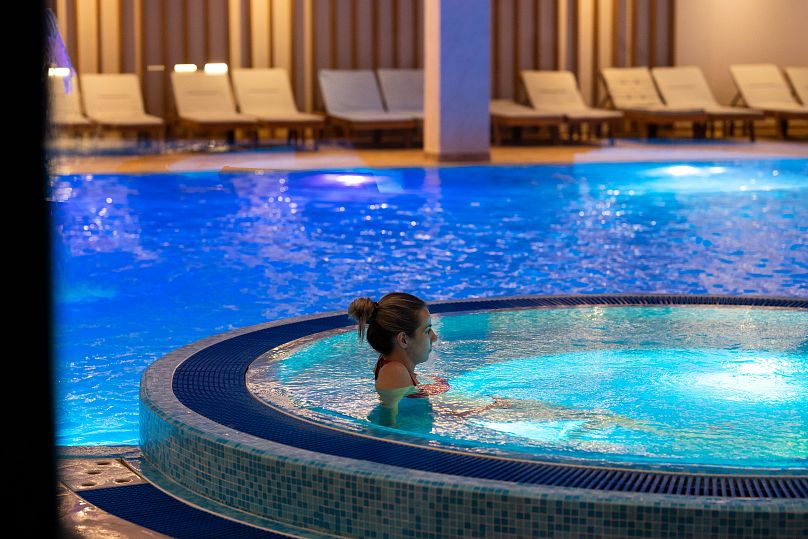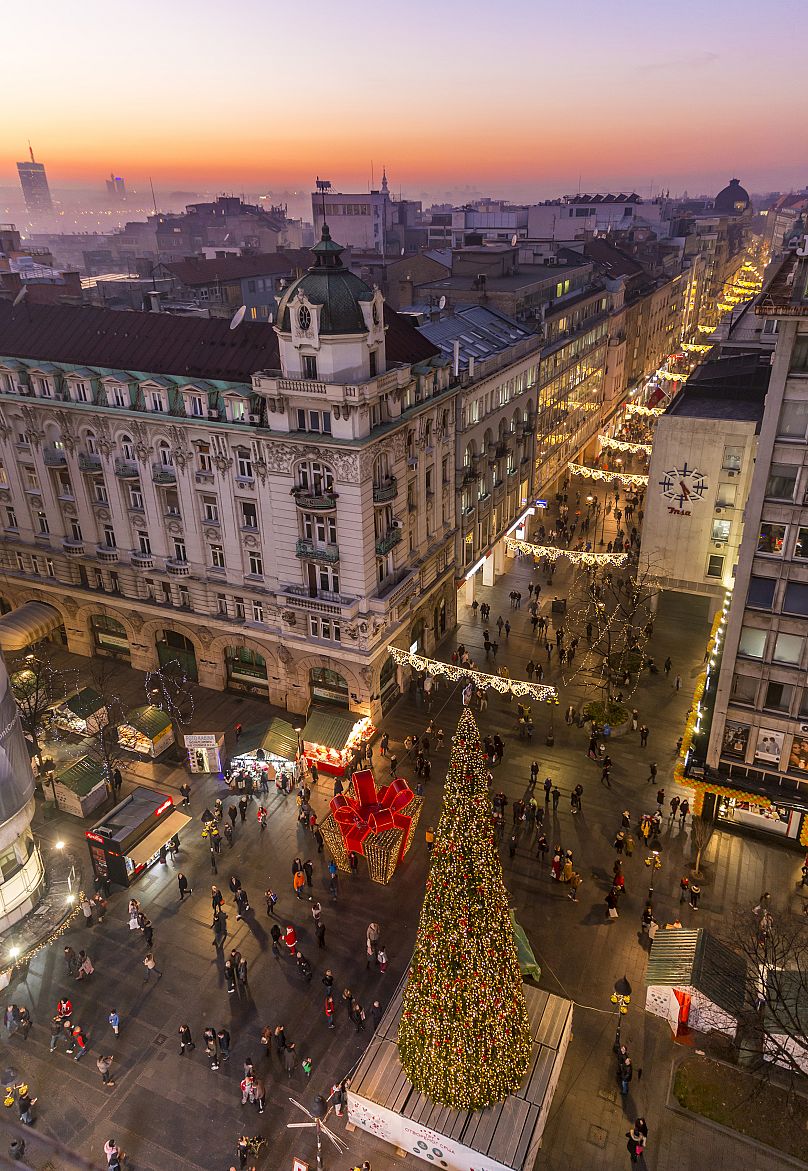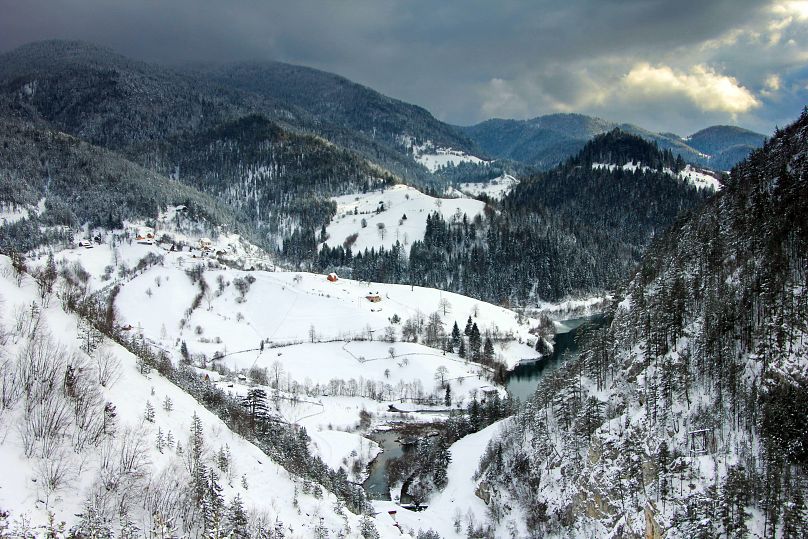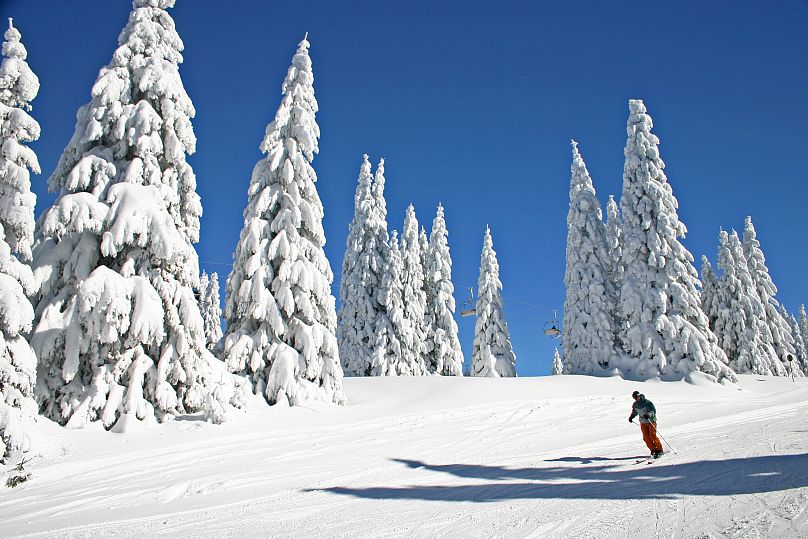With its snow-capped mountains, thermal hot springs and hearty meat stews, Serbia, the landlocked heart of the Balkans, is best experienced in the winter months. From drinking plum moonshine and feasting on spiced stews in the country’s fun-loving capital to hiking snow-covered trails in Serbia’s pristine West, there’s an adventure for every traveller in Eastern Europe’s most exciting winter wonderland.
Soak up Serbia’s historic thermal towns
Wellness may not be the first thing that comes to mind when you think of Serbia. But geothermal spas and resorts, known locally as banjas, have been a favourite winter pastime in Serbia since the Romans first settled there thousands of years ago. In the centre of the country, 200km south of Belgrade, the forested town of Vrnjačka Banja is home to dozens of modern spa hotels and resorts fed by the town’s seven natural hot springs. Meanwhile, Banja Koviljača and Sokobanja, two of the country’s oldest spas, offer the grandeur of a 20th Century wellness resort, complete with lush gardens, spring-fed fountains and a vast list of treatments.
Get into the Christmas spirit in Novi Sad
In 2022, Novi Sad – a city known for its alfresco cafes, contemporary art galleries and alternative music scene – will become the latest European Capital of Culture, the first non-EU city to be awarded the prestigious title. In winter, its snow-covered streets and squares are strung up with fairy lights for festive concerts, art exhibitions, Christmas markets and horse-drawn carriage rides. Spend the day feasting on warm gomboce (plum-filled dumplings) and heart-shaped gingerbread under candlelight, or scan the Christmas stalls for Serbian crafts and local wine tastings. Between December and January, the city’s Danube Park is transformed into a giant ice rink, allowing skaters to whizz through the park’s fairy-lit trees and frozen ponds.
Warm up on rakija and pljeskavica in Belgrade
The ancient city of Belgrade has many faces. Go to Knez Mihailova and you’ll find modern art galleries and cafes rubbing shoulders with Ottoman monuments, while in Savamala quarter street art and techno clubs mingle with ancient fortress. In the winter, Belgradians flock to the city’s watering holes, where rakija, Serbia’s potent national drink made from fermented fruits, is the tipple of choice when temperatures dip below zero. For an impressive selection of rakija brands and flavours, head to Rakia Bar, while the waiters at Ambar are particularly good at guiding customers on how to best enjoy the spirit. Rakija isn’t all Belgrade has going for it, though: the food, particularly with the influx of creative young chefs in recent years, is some of the best in the country. Don’t miss Serbian favourites like pljeskavica (spiced meat patties) served with ajvar (sweet red pepper and aubergine relish).
Hike or ride the snow trails of Tara National Park
Who said you can’t hike in winter? In Tara National Park, where emerald rivers and steep canyons stretch for 220 sq km, a network of backcountry hiking trails makes for some of the best winter trekking in Europe. Navigating through winding, snow-covered forests, you’ll pass frozen waterfalls, turquoise lakes and traditional villages selling meat stews and sweet plum-filled doughnuts. From Sjenic, the highest viewpoint in the park, you’re guaranteed stunning views of Lake Perucac and Derventa gorge, but spotting Serbia’s rare brown bear, however, requires a little more luck. For keen horseriders, there are several equestrian centres running guided horseback rides through the Tara mountains.
Hit the slopes in Kopaonik
From November to May, Serbia’s largest ski resort offers 70km of forested blue, red and black slopes. Cradling the protected 2,017-metre Pančić Peak in Central Serbia, Kopaonik is largely tailored towards beginner and intermediate skiers, but off-piste opportunities and plenty of fresh powder also attract pro riders. Wooden mountain huts here serve Serbian mulled wine by the bucket load, while restaurant menus focus on grilled meat platters and spicy fish stews. Like Belgrade’s nightlife, Kopaonik’s apres-ski scene is all about the techno, and exciting parties continue late into the night. The best part? With 200 days of recorded sunshine a year, Kopaonik is up there with the sunniest ski resort in Europe.





